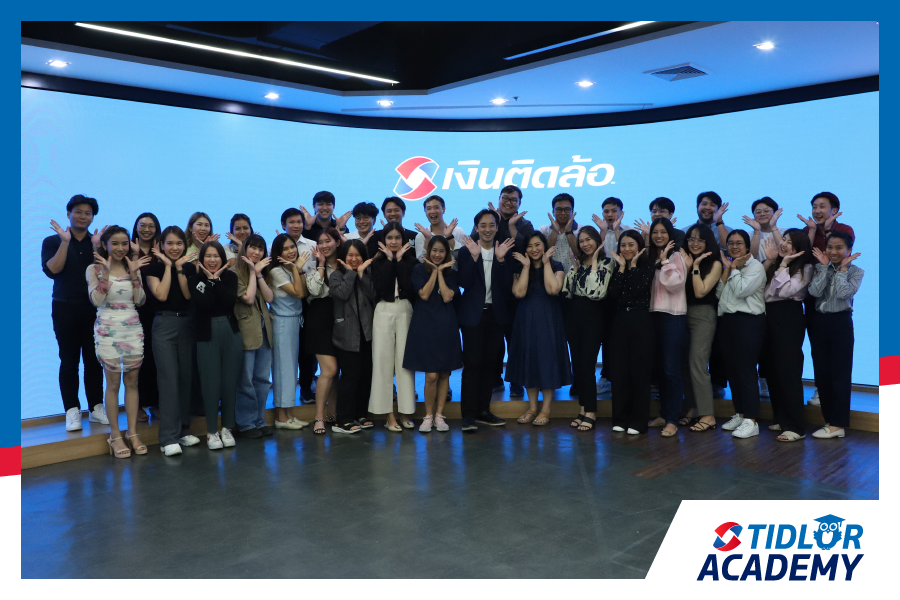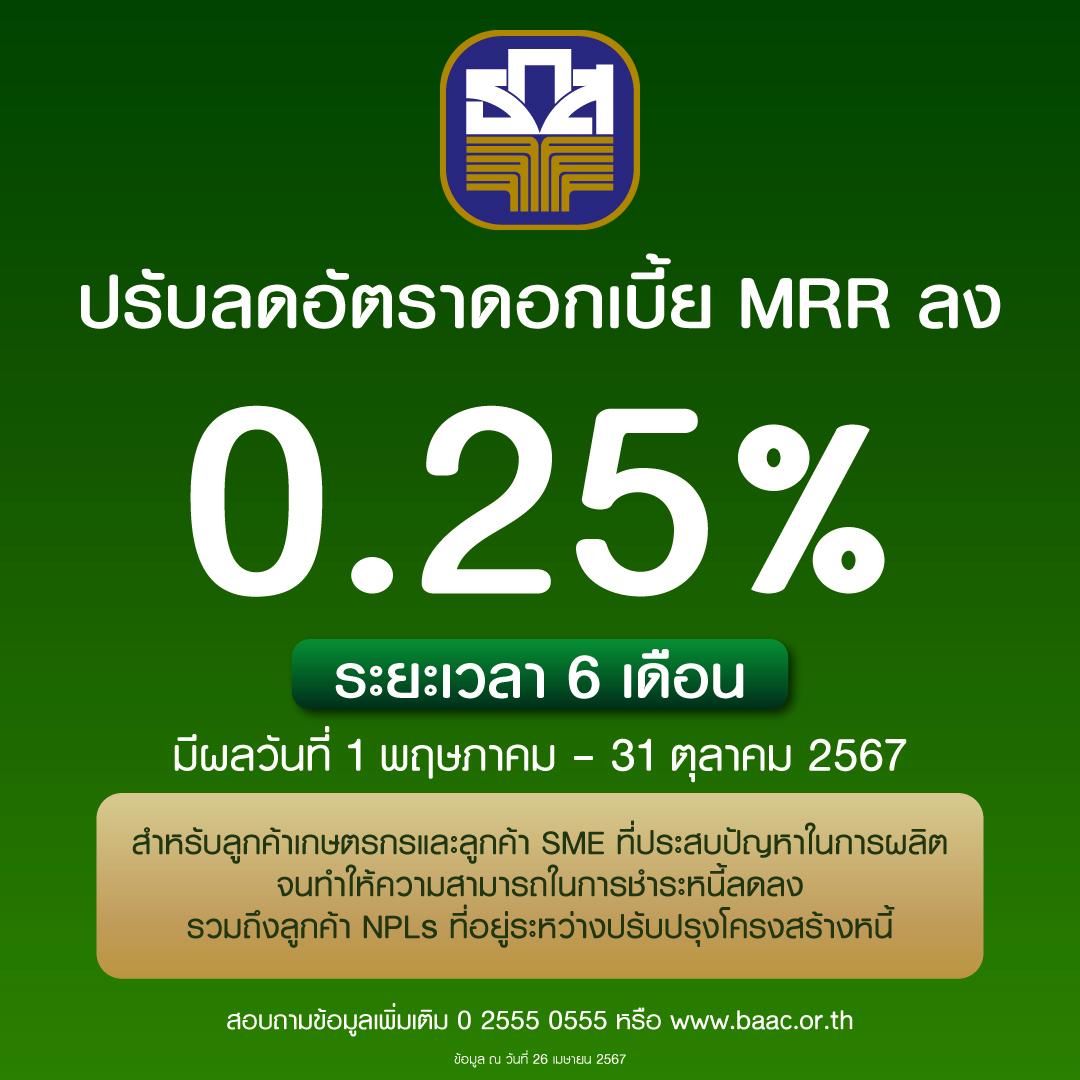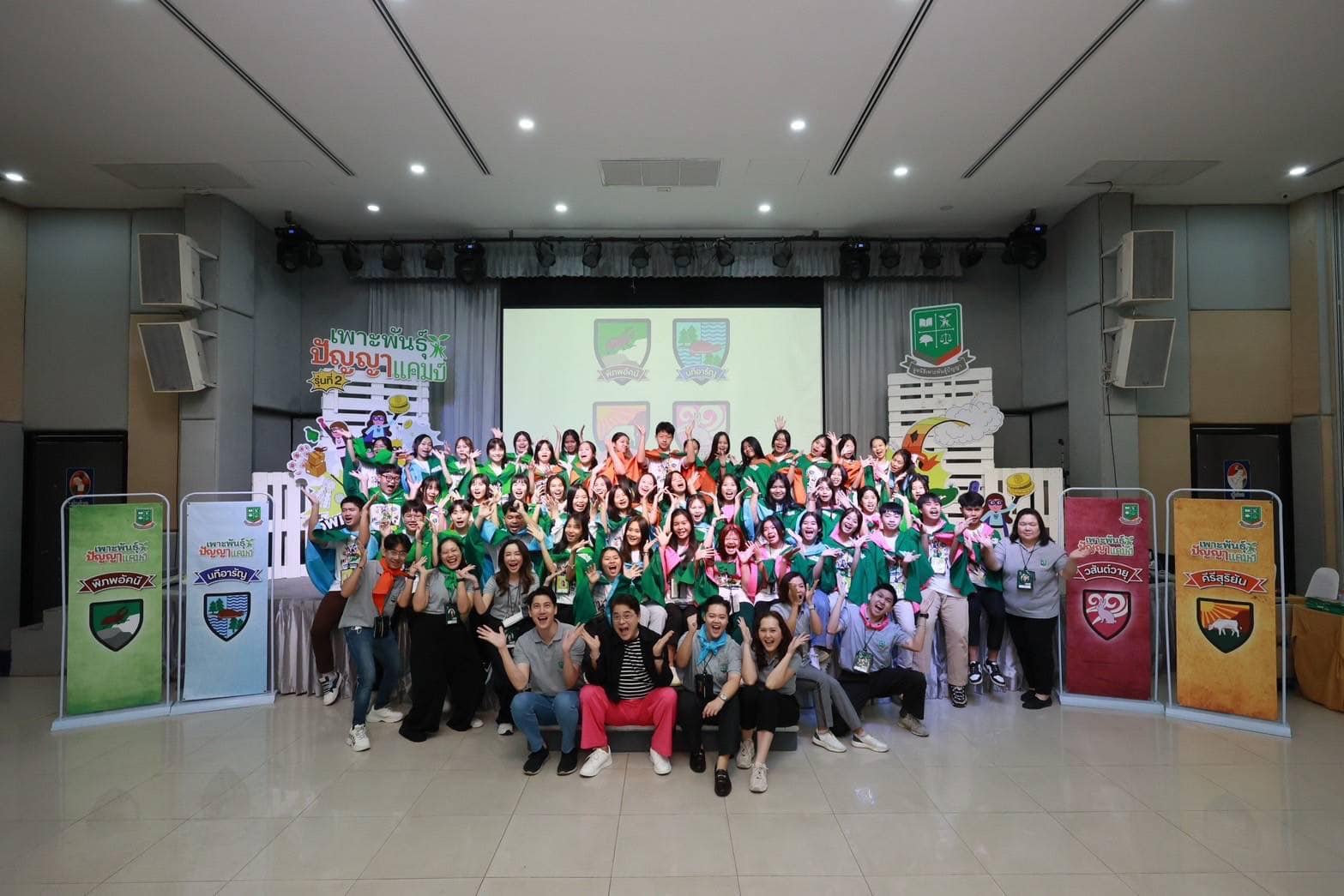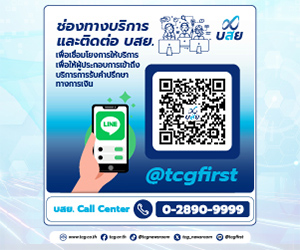- Fintech นวัตกรรมด้านการเงินที่จุดกระแสความเปลี่ยนแปลงให้ธนาคารต่างๆ เริ่มปรับตัว ก้าวข้ามขีดจำกัดแบบเดิมๆ
เมื่อผู้บริโภคก้าวเข้าสู่ยุคดิจิตอลเต็มรูปแบบ การทำธุรกรรมทางการเงินของบุคคลทั่วไปได้เปลี่ยนแปลงไปจากเดิม และช่องทางก็เพิ่มมากขึ้น ธนาคารพาณิชย์จึงมีการปรับตัวเพื่อตอบรับความต้องการหลายด้าน อาทิ ด้านการให้บริการต่างๆ รวมถึงแพลตฟอร์มการชำระเงินออนไลน์ที่คล่องตัว และตรงความต้องการของผู้บริโภคมากขึ้น
และธนาคารเริ่มกล้าที่จะก้าวข้ามขีดจำกัดแบบเดิมๆ และหันมามองนวัตกรรมใหม่ๆ ที่จะเอื้อประโยชน์กับผู้บริโภค และเริ่มใช้ประโยชน์จากฐานข้อมูลขนาดใหญ่มหาศาล (Big data) โดยมีการวิเคราะห์เพื่อนำข้อมูลเหล่านี้มาใช้ให้เกิดประโยชน์และเกิดความแม่นยำมากขึ้น เช่น การประเมินเครดิตลูกค้ารูปแบบใหม่ ผ่านการวิเคราะห์การใช้จ่ายของพวกเขามากกว่าการตรวจสุขภาพการเงินแบบเดิมๆ ในมุมของโลกค้าปลีก นวัตกรรมทางการเงิน และแพลตฟอร์มใหม่ๆ ช่วยให้เราก้าวสู่สังคมไร้เงินสดอย่างเป็นรูปธรรม ทั้งการชำระเงินผ่านบัญชีที่เชื่อมต่อกับ mobile banking, การชำระผ่านบัตร, หรือการชำระผ่าน e-wallets ซึ่งเป็นอีกทางเลือกที่คล่องตัวและได้รับความนิยมเพิ่มขึ้นเป็นอย่างมาก
- OMNI Channel – การเชื่อมต่อทุกช่องทางการขายคือ อนาคตของค้าปลีก
ในโลกที่ประสบการณ์ที่ตอบโจทย์โดนใจลูกค้าเป็นสิ่งสำคัญ การขายผ่านช่องทางเดียวไม่เพียงพออีกต่อไป ในปีที่ผ่านมาเราจะได้ยินคำว่า “การเชื่อมต่อทุกช่องทางการขาย - OMNI Channel” และ “โลกใหม่ของการค้าปลีก - New Retail” อยู่บ่อยครั้ง และจะเห็นตัวอย่างการเปลี่ยนแปลงทั่วทุกภูมิภาค ผู้เล่นรายใหญ่ในโลกค้าปลีกแบบออนไลน์ เริ่มให้ความสำคัญกับร้านค้าออฟไลน์ และเริ่มขยายสู่โลกของ “การเชื่อมต่อทุกช่องทางการขาย - OMNI Channel” มากขึ้น เพื่อเชื่อมต่อประสบการณ์การช็อปปิ้งออนไลน์เข้ากับออฟไลน์อย่างไร้รอยต่อ และนี่ก็ส่งผลให้ผู้ค้าปลีกที่เคยใช้ช่องทางการขายแค่ในห้างร้าน เริ่มให้ความสำคัญกับ OMNI Channel Marketing มากขึ้น
ผู้ค้าปลีกแบบดั้งเดิมจำนวนมาก ก็เริ่มที่จะพัฒนากลยุทธ์ใหม่ ที่รวมทุกช่องทางการขายเป็นการเดินทางหนึ่งเดียว เพื่อให้ลูกค้าได้เพลิดเพลินกับประสบการณ์การช็อปปิ้งที่ลื่นไหลและเชื่อมต่อประสบการณ์ทุกช่องทางได้อย่างสะดวกสบาย ตั้งแต่การไปเลือกซื้อที่ร้านค้า ได้เห็น ได้ลองเลือก สัมผัสสินค้าจริง และหากสนใจซื้อ ลูกค้าก็สามารถเช็คเกี่ยวกับสี / ขนาด / สต็อกที่มีให้เลือก จนถึงการกดสั่งซื้อ และระบุการจัดส่งผ่านช่องทางออนไลน์ขณะที่ยังอยู่ที่ร้านได้ทันที
- การเติบโตของธุรกิจชำระเงินแบบดิจิตอล และความเปลี่ยนแปลงในโลกทางการเงินแบบดั้งเดิม
ด้วยการพัฒนาอย่างก้าวกระโดดในโลกอีคอมเมิร์ซ และความสะดวกในการทำธุรกรรมทางการเงินบนมือถือ ทำให้การชำระเงินแบบดิจิตอลเป็นช่องทางการจ่ายเงินที่ได้รับความนิยมสูงขึ้นเรื่อยๆ และนี่ก็เป็นโอกาสของอุตสาหกรรมการให้บริการทางการเงิน ที่จะปรับเปลี่ยนอย่างต่อเนื่องไปตามพฤติกรรมของผู้ใช้งาน และ สถาบันทางการเงินต่างๆ ได้ใช้เทคโนโลยีเหล่านี้มาขับเคลื่อนนวัตกรรมใหม่ๆ เพื่อตอบสนองความต้องการของผู้บริโภค
ในวันนี้การชำระเงินแบบดิจิตอลได้ก้าวสู่บทบาทใหม่ จากที่เคยเป็นแค่เครื่องมือในการจ่ายเงิน สู่การเป็นช่องทางการจัดจำหน่ายสำหรับสินเชื่อพิเศษขนาดเล็ก และใช้ฐานข้อมูลขนาดใหญ่ (Big data) ด้านการจับจ่ายของลูกค้ามาเป็นตัวประเมินความน่าเชื่อถือทางการเงินของผู้กู้ เพื่อลดความเสี่ยงของผู้ให้กู้ และการเติบโตของโลกการเงินดิจิตอลในชีวิตประจำวันของผู้บริโภค ส่งผลให้เกิดความเปลี่ยนแปลงในธุรกิจแบบเดิมๆ อาทิ ธุรกิจรับแลกเปลี่ยนเงินตรา และ ร้านค้าปลีกรายย่อยที่รับเฉพาะเงินสด ในโลกยุคดิจิตอล เราจะเริ่มเห็นการเกิดขึ้นของธุรกิจแลกเปลี่ยนสกุลเงินข้ามภูมิภาคแบบดิจิตอล ที่ใช้อัตราแลกเปลี่ยนจากกลไกตลาด ซึ่งมีอัตราผันผวนแบบ real time แทนอัตราแลกเปลี่ยนจากหน่วยงานการเงินระดับภูมิภาคแบบเดิมๆ
- การใช้งานที่เพิ่มขึ้นของ ปัญญาประดิษฐ์ (Artificial Intelligence) และการพัฒนาไปเป็นความอัจฉริยะแบบลูกผสม (Hybrid Intelligence หรือ HyIntelligence)
ปัญญาประดิษฐ์ (Artificial Intelligence หรือ AI) นั้นเป็นเครื่องมือที่มีบทบาทสำคัญเป็นอย่างยิ่งในการช่วยให้องค์กรต่างๆ สามารถมีปฎิสัมพันธ์กับลูกค้าได้ในระดับบุคคล เพราะเครื่องมือ AI สามารถช่วยรวบรวมข้อมูลจำนวนมหาศาลของลูกค้าเข้าด้วยกัน พร้อมวิเคราะห์เพื่อนำผลลัพธ์มาปรับปรุงประสบการณ์ของลูกค้าและสร้างความสัมพันธ์ที่แข็งแกร่งผ่านการตลาดเชิงประสบการณ์ (Experiential marketing)
ในปัจจุบัน ปัญญาประดิษฐ์ (AI) และ ความอัจฉริยะของมนุษย์ (HI) มักจะถูกนำมาใช้เพื่อสร้างปฏิสัมพันธ์กับผู้คน เพราะการเรียนรู้ของปัญญาประดิษฐ์ นั้นขึ้นกับฐานข้อมูลขนาดใหญ่ (Big Data) ที่ถูกป้อนเข้ามาโดยความอัจฉริยะของมนุษย์ เพื่อคาดการณ์และดำเนินการงานตามคำสั่ง เช่น ในกรณีของโปรแกรมตอบกลับอัตโนมัติแบบแชทบอท (Chatbot) และสิริ (SIRI) ความอัจฉริยะแบบลูกผสม (Hybrid Intelligence) หรือที่เรียกแบบย่อว่า HyIntelligence เป็นความชาญฉลาดในระดับสูงขึ้นของสมองกล ที่ผสานการทำงานของปัญญาประดิษฐ์ (AI) และความอัจฉริยะของมนุษย์ (HI) ในระดับเซลล์ประสาทสั่งการ สิ่งนี้จะช่วยเพิ่มขีดความสามารถและประสิทธิภาพของมนุษย์อย่างมาก ตัวอย่างเช่น การฝังแผ่นชิพปัญญาประดิษฐ์ขนาดเล็กระดับนาโน (AI Nanochip) ในมนุษย์ที่ช่วยให้เข้าใจการทำงานของระบบประสาท เพื่อลดการปฏิสัมพันธ์ระหว่างคนทั้งทางวาจาและร่างกาย เครื่องมือปัญญาประดิษฐ์ (AI) เหล่านี้จะยังคงถูกนำมาใช้เพื่อช่วยให้ บริษัทต่างๆสามารถสร้างความผูกพันกับลูกค้าในระดับบุคคล ไม่เพียงเฉพาะกับจำนวนลูกค้าในกลุ่มที่ใหญ่มากขึ้นเท่านั้น แต่ในความถี่ที่สูงขึ้นด้วย อย่างไรก็ตามการนำเทคโนโลยีที่กล่าวมาข้างต้นนี้มาใช้อย่างแพร่หลาย ควรคำนึงถึงความประเด็นความเหมาะสมทางด้านมนุษย์และจริยธรรมด้วยเช่นกัน
- เทรนด์ใหม่ของ “ผู้ประกอบการภายใน - Intrapreneur” ทางออกแบบ Win – Win ในโลกธุรกิจยุคใหม่
ในยุคที่ใครๆ ก็อยากเป็นเจ้าของกิจการ พนักงานและผู้บริหารจากองค์กรต่างๆ ที่มีความสามารถสูง เริ่มลาออกเพื่อไปตามความฝันในการเริ่มต้นกิจการของตัวเอง ทำให้เกิดปัญหาใหญ่ คือ องค์กรก็ขาดบุคลากรที่มีความรู้ความสามารถ ส่วนผู้ที่ลาออกไปเริ่มต้นกิจการ ก็ไม่ใช่จะประสบความสำเร็จเสมอไป จะเห็นได้จากจำนวนบริษัทสตาร์ทอัพที่ประสบความสำเร็จนั้นเป็นเปอร์เซ็นต์ที่น้อยมาก และส่วนใหญ่ พวกเขามักมีปัญหาในการขยายธุรกิจ หรือ scale up
เพื่อป้องกันปัญหาเหล่านี้ องค์กรหลายๆ แห่งเริ่มส่งเสริมให้พนักงานพัฒนาตัวเองเป็น “ผู้ประกอบการภายใน หรือ Intrapreneur” ที่มีความพร้อมและเต็มใจที่จะปฏิบัติงาน เสมือนตนเป็นเจ้าของกิจการ อย่างเต็มที่ เขาเหล่านั้นพร้อมเสนอตัวรับผิดชอบ เสนอไอเดีย รับความเสี่ยงและสร้างนวัตกรรม ตลอดจนดำเนินกิจกรรมอย่างอุตสาหะเพื่อนำไปสู่ผลกำไรของบริษัทในบั้นปลาย เมื่อพนักงาน “ผู้ประกอบการภายใน หรือ Intrapreneur” มีไอเดียและเป้าหมายที่ชัดเจน องค์กรก็จะให้การสนับสนุน ทั้งการเงินและการเข้าถึงทรัพยากรที่จำเป็นในการสร้างสรรค์นวัตกรรม สินค้า หรือบริการใหม่ๆ เพื่อให้ Intrapreneur ได้ริเริ่ม สร้างสรรค์นวัตกรรมใหม่ๆให้กับบริษัท พร้อมได้รับผลตอบแทนที่มากกว่าเงินเดือน อาทิ การได้เป็นหุ้นส่วนในบริษัทใหม่ หรือ ได้ผลตอบแทนต่างๆที่มากกว่าตัวเงิน นับเป็นรูปแบบทางธุรกิจสมัยใหม่ที่ตอบโจทย์ให้ประสบความสำเร็จร่วมกันทุกฝ่าย
- การใช้เทคโนโลยีโดรนเป็นเครื่องมือทางการตลาดและสื่อโฆษณา
เทคโนโลยียุคใหม่เป็นประตูสู่โอกาสใหม่ๆ ในการสร้างความแตกต่าง และในยุคนี้คงต้องกล่าวถึง “โดรน - Drone” ซึ่งเป็นเครื่องมือสำคัญที่มาเปลี่ยนแปลงรูปแบบการสร้างสรรค์งานด้านการตลาดและการสื่อสาร ในทุกวันนี้
ในอดีต หากต้องการภาพถ่ายทางอากาศสวยๆ เราจะต้องลงทุนมหาศาลในการผลิต ต้องใช้เครน ติดตั้งนั่งร้าน หรือแม้แต่ใช้เฮลิคอปเตอร์ ซึ่งต้องใช้ค่าใช้จ่ายในการผลิตมหาศาล และมีเพียงแบรนด์ใหญ่ๆเท่านั้นที่มีงบประมาณมากพอจะทำได้ แต่ในปัจจุบันนี้ “โดรน - Drone” ทำให้การสร้างวีดีโอมาร์เก็ตติ้งสวยๆ นั้นไม่เกินเอื้อมอีกต่อไป เราจะได้เห็นภาพถ่ายทางอากาศสวยๆ ของโครงการอสังหาริมทรัพย์ มุมกล้องแปลกใหม่ในหนังภาพยนตร์ฟอร์มเล็ก หรือภาพสวยๆ ที่บรรดาบล็อกเกอร์ใช้โดรนในการถ่ายทำ และที่มากกว่านั้น คือ ในบางประเทศยังสามารถใช้โดรนเป็นสื่อโฆษณาที่ใช้นำเสนอแบนเนอร์ หรือฉายข้อความดิจิตอลบนแลนด์มาร์ค สถานที่สำคัญ ต่างๆ ได้อีกด้วย เป็นการเปิดมุมมองความสร้างสรรค์ใหม่ๆ ให้กับโลกการตลาดทีเดียว
- ความเปลี่ยนแปลงที่มาพร้อมกับตู้จำหน่ายสินค้าอัตโนมัติ 24/7
ตู้จำหน่ายสินค้าอัตโนมัติทั้งแบบใช้เงินสดและไม่ใช้เงินสด ทั้งแบบที่ขายสินค้าพื้นฐานอย่างน้ำผลไม้สด ไปจนถึงอาหารสดชั้นดีอย่างเนื้อปลาแซลมอนในแพ็คสูญญากาศกำลังเป็นที่นิยมอย่างมากในสิงคโปร์
ข้อดีของตู้หยอดเหรียญคือ เป็นการทำงานแบบไม่ต้องใช้คนขาย เปิดตลอด 24 ชั่วโมง เปิดทุกวัน และเสนอทางเลือกชำระเงินที่หลากหลาย และความนิยมตู้อัติโนมัติที่สูงขึ้น ส่งผลกระทบกับผู้ค้ารายย่อย เช่นร้านขายเครื่องดื่มข้างถนน หรือร้านขายของชำ ในขณะเดียวกันตู้ขายสินค้าอัตโนมัตินี้ ยังกลายเป็นพื้นที่สื่อโฆษณากลางแจ้งราคาย่อมเยา ที่เป็นทางเลือกใหม่ๆ ในการทำโฆษณาแบบ Out-Of-Home (OOH) แต่นักการตลาดต้องมีความเข้าใจกลุ่มตลาดเป้าหมาย ทั้งในแง่ทำเลที่ตั้งเชิงกลยุทธ์ และ ธรรมชาติการรับสื่อ Out-Of-Home (OOH) ของพวกเขา จึงจะสามารถเลือกใช้ สื่อโฆษณาบนตู้ขายสินค้าอัตโนมัติเป็นชช่องทางการสื่อสารได้อย่างมีประสิทธิภาพ
- ความนิยมที่เพิ่มขึ้น ของธุรกิจที่มีผลกระทบเชิงบวกต่อสังคม
ในยุคที่ลูกค้าได้รับการเชื่อมต่อและรับรู้ข่าวสารทางโลกออนไลน์ย่างต่อเนื่องตลอด 24 ชั่วโมง พวกเขามีแนวโน้มที่จะตัดสินใจโดยใช้ความรู้สึกเป็นตัวนำ แต่ในโลกของธุรกิจขนาดใหญ่ นั้นยากที่แบรนด์จะสามารถสร้างความรู้สึกผูกพันกับลูกค้า ดังนั้น เพื่อสร้างความแตกต่างจากคู่แข่ง ธุรกิจจำนวนมากต่างหันมาใช้ความรับผิดชอบต่อสังคมเป็นหนึ่งในหลายๆ วิธีในการดึงดูดลูกค้า ซึ่งวิธีการก็มีหลากหลาย ตั้งแต่การระดมทุนหรือการให้การสนับสนุนสำหรับโครงการเพื่อสังคมและสิ่งแวดล้อม
ในทางกลับกันความคิดริเริ่มทางสังคมเหล่านี้ทำให้บริษัทฯ สามารถบอกเล่าเรื่องราวเกี่ยวกับธุรกิจของพวกเขาผ่านแพลตฟอร์มโซเชียลมีเดียต่างๆ ช่วยสร้างความเกี่ยวข้อง และความผูกพันทางอารมณ์สำหรับบริษัทเหล่านี้เพื่อทำการตลาดแบรนด์ของพวกเขา อย่างไรก็ตาม การตลาดที่ปราศจากการเข้าอกเข้าใจผู้บริโภคอย่างมีความรู้สึกร่วม นั้นล้าสมัยไปแล้ว และด้วยการเพิ่มขึ้นของข่าวปลอมความถูกต้องในการสื่อสารการตลาดมีความสำคัญในการสร้างปัจจัยความน่าเชื่อถือสูงในผู้บริโภค
- การทำความเข้าใจและใช้ประโยชน์จากเทคโนโลยีสมาร์ทโฮม
เมื่อเทคโนโลยียุคใหม่มีการพัฒนามากขึ้น อุปกรณ์เครื่องใช้ไฟฟ้าภายในบ้านส่วนใหญ่ จะมีการพัฒนาเสริมด้วยเทคโนโลยีปัญญาประดิษฐ์ (AI) ที่จะทำให้อุปกรณ์ทุกชิ้นในบ้าน อาทิ ตู้เย็น มีความชาญฉลาด (Smart Home) สามารถช่วยตรวจสอบพฤติกรรมการบริโภค และช่วยเตือนเจ้าของบ้านโดยอัตโนมัติให้สั่งซื้อสินค้าที่คงเหลือน้อย เทคโนโลยีนี้จะพาเราก้าวเข้าสู่ยุคแห่งการเปลี่ยนแปลง โดยเฉพาะการจับจ่ายซื้อของตามร้านขายของชำแบบดั้งเดิมจะเปลี่ยนไป ด้วยการเชื่อมโยงเครือข่ายแบบบูรณาการโดยตรงกับซัพพลายเออร์ การชำระเงินดิจิตอล และการจัดส่ง รูปแบบการจับจ่ายสินค้าอุปโภคบริโภคจะเปลี่ยนไป
ด้วยเทคโนโลยี Smart Home ที่ได้รับความนิยมเพิ่มขึ้นเรื่อย ๆ “ปัญญาประดิษฐ์” (AI) ในสมาร์ทโฮมที่มีการจดจำใบหน้าและเทคโนโลยีปัญญาประดิษฐ์ (AI) จะตรวจสอบพฤติกรรมของแต่ละบุคคลและให้ความเป็นส่วนตัวในการใช้ชีวิตที่บ้าน ตั้งแต่การตั้งค่าอุณหภูมิในบ้าน ไปจนถึงแสงไฟบรรยากาศเพื่อความบันเทิง เช่นเพลงส่วนตัวและรายการโทรทัศน์ ดังนั้นนักการตลาดจะต้องเข้าใจเทคโนโลยี Smart Home ที่เกิดขึ้นใหม่และเรียนรู้วิธีการควบคุมเทคโนโลยีนี้เพื่อทำการตลาดผลิตภัณฑ์ของตน
และที่สำคัญที่สุด คือ นักการตลาดจะต้องเข้าใจถึงความสำคัญของการตลาดยุคใหม่ที่เน้นการเชื่อมต่อกับลูกค้าในระดับบุคคล ในยุคนี้ แบรนด์ที่นำเสนอเพียงแค่สินค้าและบริการจะไม่เพียงพออีกต่อไป แต่ความเข้าใจและการให้ความสำคัญกับความรู้สึกของลูกค้าจะกลายเป็นมาตรฐานใหม่ในการตลาดและการทำธุรกิจในภาพรวม
++++++++++++++++++++++++++++++++++++++++++++
9 TOP TRENDS OF MARKETING IN ASIA 2019
Asia Marketing Federation (AMF) and Marketing Association of Thailand (MAT) issue a special report on the 9 Top Trends of Marketing in Asia 2019. The report is the synthesis of the professional foresight and consolidated wisdom of the Asian marketing fraternity.
Asia Marketing Federation is the networking body of marketing associations in Asia. AMF has a critical mission as the premier regional body which effectively promotes the interests of marketing in Asia and strengthens the Asian marketing fraternity. Its member countries include Bangladesh, Cambodia, China, Hong Kong, Indonesia, Japan, Korea, Macau, Malaysia, Mongolia, Myanmar, Philippines, Singapore, Sri Lanka, Taiwan, Thailand and Vietnam.
Top 9 Trends of Marketing in Asia 2019
- Banking retail streamlining and digital payment platform – Fintech
We are seeing more adaptation of digital technology especially within the banking sector in the area of customer service, payment and credit worthiness rating. There is a need to embrace analytics driven marketing. In particular, we are seeing innovative ways of assessing customer worthiness through their spending patterns rather than their existing financial health and commitments. At the retail scene, there is a proliferation of multiple cashless payment via connected accounts, cards and e-wallets. In the area of e-wallets, we foresee the streamlining of the e-wallets payment options.
- OMNI channel – increased popularity and accelerated adoption by retailers
The move of e-commerce giants to acquire brick-and-mortar retailers has highlighted the importance of OMNI marketing, the seamless integration of online and online marketing. This, in turn, has influenced smaller e-commerce players and brick-and-mortar retailers to incorporate OMNI marketing in their business strategy.
More retailers are starting to evolve their OMNI channel strategy where customers can enjoy digital enhanced shopping experience, interact and purchase with the merchant online/offline seamlessly. From going to shop to experience “touch and feel” of the products, online query on color/size/stocks availability right up to the purchase and delivery arrangement all done online while still at the shop.
- Rise in utilization of Digital Payment and disruption of traditional currency business with digital currency
With the improvement to the digital experience of e-commerce players and the facilitation of mobile transactions, Digital Payment Platforms are starting to take on a new role. Several institutions have explored the possibility of treating Digital Payment Platform as a distribution channel for ultra-micro loan. This type of loan will be attractive to borrowers if the cost of fund is more economical. On the other hand, by analyzing data about the behavioral pattern of Digital Payment Platform users, it can help the lender to minimize the risks associated with ultra-micro loan.
We are seeing more adaptation of digital currency in daily transaction. This has affected traditional businesses such as money changer and traditional small retailers that offer only cash payments. There’s more cross-regional currency exchange digitally whereby the exchange rate can be influenced not by regional monetary authority but by market forces. It will also have an impact of the exchange rate in terms of real time volatility.
- The increased usage of Artificial Intelligence and its transition towards Hybrid Intelligence (HyIntelligence)
In the corporate world, the role of Artificial Intelligence (AI) has started to help companies to personalize their engagement with the customers. By using AI tools, companies with very large number of customers can collect and compile data of their customers and use it to improve customer experience and build strong relationship (Experiential marketing).
Currently AI and HI are mostly limited to interaction as in Industrial 4.0. Artificial Intelligence learning is based on big data that are input by human intelligence to anticipate and execute tasks to be performed as in the case of Chatbot and SIRI. Hybrid Intelligent (HyIntelligent) is the next level of intelligence where we see integration of AI and HI at neuro level. This will greatly enhance human capability and effectiveness. An example would be embedding AI nanochip in human that are able to pick up neuro pulses thereby cutting down verbal and physical interaction. The AI tools will continue to help companies to execute personalized engagement not only to a large number of customers but also in higher frequency. However, human and ethical issues should be taken into consideration with the extensive application of all the above mention technologies.
- Increased popularity of Intrapreneur
Many professionals from companies across the region are taking the plunge to start up their own companies. However, the percentage of successful start-up companies is very small and most of them failed to scale-up. This resulted in both the professionals, and the companies they work for losing the opportunity to create value. To avoid such a situation, many companies are starting to encourage their professionals to become intrapreneur. The professionals are encouraged to take bigger risks, in return, they are offered various benefits of intrapreneurship from shared ownership in the newly created company, houses and other non-monetary incentives for a win-win partnership.
- Drone technology as a marketing tool and advertising medium
We are seeing more drones being used as a marketing tool. In the past, to capture stunning aerial shots, we need to deploy expensive cranes, scaffolds/fixtures and even helicopters. Nowadays, video marketing is within an arm’s reach of consumers in Asia. Hence, even real estate agents are creating video content in YouTube to offer breathtaking aerial shots of the properties they are marketing. Small independent film makers are using Drone Technology to offer creative angles in their movie making. Many bloggers are now incorporating drones into their short video. Drones are being used as a mobile advertising medium carrying messages in traditional print medium and in some cases projecting digital messages on prominent landmark.
- Impact of Retail disruption by unmanned 24/7 Vending Machines
More and more vending machines with cash and non-cash options are doting the Singapore landscape. They offer from simple freshly squeezed orange juice, convenience goods to vending of vacuum packed fresh salmon. Some of the advantages of Vending Machines are - they operate unmanned 24/7 and offer multiple payment options beyond cash. As such they are disrupting traditional retailers like fruit juice vendors, corner convenience stalls and to some extend even big chain stores. At the same time, these Vending Machines double up as a big outdoor advertising medium, circumventing the expensive Out-Of-Home (OOH) advertising cost thus disrupting part of advertising agencies business. As such marketers will have to understand target market segment, the strategic locations and their use as an OOH and harness the Vending Machines as a potential traditional or digital communication tool.
- The growing popularity of business with social impact
The always-connected customers who are constantly updated 24/7 with the happenings around them tend to make decisions influenced by emotional judgment. On the other hand, the growing commoditization by businesses have hindered their abilities to engage emotionally with customers. To differentiate themselves from competitors, more businesses are adopting social responsibilities as one of the many ways to engage their customers. These ranges from fund raising for social programs, lending support towards a social cause to embracing causes such as environmental responsibility and sustainability. These social initiatives, in turn, enable them to tell stories about their businesses through the various social media platform. It helps create relevance and emotional attachment for these companies to market their brand. However, marketing without consumer empathy is out, and with the rise in fake news, authenticity in these marketing communication is crucial in building high trustworthiness factor in consumer.
- Understanding and leveraging on Smart Home Technology
Grocery shopping at traditional outlets may be disrupted by enhanced Smart Home technology where devices (eg. home appliances like refrigerator) with AI technology will monitor consumption behavior. It will then automatically send request to home owner to remind them to place order for low inventory items. With integrated network link directly to suppliers, digital payment and delivery infrastructural in place, the landscape of grocery shopping is expected to change. With Smart Home getting more and more prevalent, AI in Smart Home with face recognition and AI technology will monitor individual behavior and provide personalization in lifestyle home living - ie. from home temperature setting to ambience lighting to entertainment like personalized music and television programs. Hence, marketer will need to understand emerging Smart Home technology and learn how to harness this technology to market their products. Marketers will need to leverage the power of personalization. Hence, personalization and customer intimacy is becoming the new standard in Marketing.






















